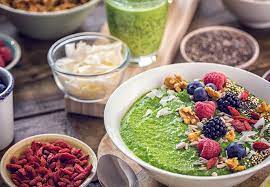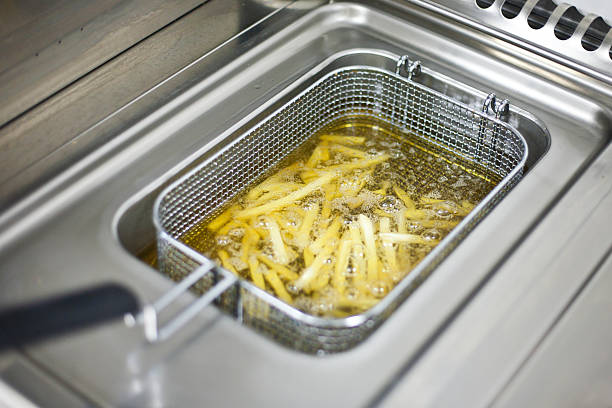Raw food is a diet that eats mainly whole, unprocessed, plant-based and organic foods. According to some sources, three-quarters of this diet should be raw.
Raw food advocates believe eating raw foods can improve your health and well-being.
Although weight loss is not the primary goal of the raw food diet, switching to raw foods can reduce weight.
This article will give you an overview of raw food. It will also explain what to avoid and how to prepare it.
Types and diets for raw food
Share on Pinterest
Freshly made vegetable and fruit juices are available to those who follow a raw diet.
Most people who follow the raw diet eat only plants, making it a typical vegan diet. Some people also eat raw meat or animal products.
There are three main types of raw food diets:
- A raw vegan diet does not include animal products and focuses only on plant-based food
- A raw vegetarian diet contains plant-based foods, unprocessed milk products, and raw eggs
- A raw omnivorous diet includes plant-based food, animal products, and raw or dried meat.
What are my options?
Different people interpret the raw food diet differently. Some people may eat cooked food while others will not. It is a way to live for some, while others see it as a lifestyle choice.
These foods can be used in most raw food diets.
- fruits, and vegetables
- Dried fruits and vegetables
- Freshly made vegetable and fruit juices
- Soak and sprout beans, or other legumes, as well as grains
- raw nuts, and seeds
- Raw nut kinds of butter such as peanut butter or almond butter
- nut glasses of milk, including almond milk
- coconut milk
- Cold-pressed olive or coconut oil
- Nutritional yeast
- seaweeds
- Dried fruits
- Green food powder such as dried wheatgrass, or algae
- Fermented foods, such as kimchi or sauerkraut
- Purified water but not tap water
- Other organic, natural, and unprocessed foods
Depending on what type of diet you choose, a raw food diet could contain.
- Raw eggs
- Raw fish such as sushi and sashimi
- Other raw or dried meats
- Non-pasteurized, non-homogenized pints of milk and dairy products
Avoid these foods:
- All cooked and processed foods
- Oils refined
- Table salt
- Refined sugars and flour
- Coffee, Tea, and Alcohol
- pasta
Olives are too bitter about being eaten raw. Tins of olives have been cooked during manufacturing. Olives can be eaten raw if they have been sun-cured.
How do you prepare food?
People tend to use certain techniques when preparing raw food. These include dehydrating, soaking and juicing. This diet allows you to chop and blend foods.
Foods heated above a temperature of 104°F to 118°F are not allowed. However, figures can vary from one Source to another. Only heat is allowed with a dehydrator. This is a device that blows hot water across food.
Some fruits and vegetables can be eaten raw, while others require preparation. There are several common methods to prepare raw foods:
- Soak beans and grains in water
- Choosing sprouted grains over whole grains
- Fruits can be dried or dehydrated.
- Making smoothies or juicing fruits & vegetables
Ideas for recipes
These are some examples of nutritious meals that can be used in a raw food diet:
- Breakfast: Rawnola is the raw version of granola made with walnuts, dates and flaxseed. You can finish the dish with various colorful fruits such as blueberries and mango. You can add juices, nut milk or cold-pressed oils.
- Snack These raw green smoothies can be customized to suit your needs. Common ingredients include bananas and kale. You can also add spinach, blueberries and other fruits and veggies.
- Lunch: Raw cauliflower “fried rice” with broccoli, edamame beans and peppers
- Dinner Raw Pad-Thai salad With peppers, peanuts and zucchini
You can also make desserts with raw ingredients like a raw vegan lemon cake made from dates, coconut butter and cashews. These are made with dates, cashews and cacao nibs.
Benefits
People who eat raw foods believe it improves their ability to fight and prevent diseases, particularly chronic ones.
A 2019 review trusted Source reveals significant health and disease benefits from a plant-based diet.
A raw food diet can provide many benefits, including weight loss and improved health. These are just a few of the possible benefits.
High in nutrients
Raw food is high in vegetables, fruits, legumes, and nuts. All of these are essential components of a healthy diet. A variety of these foods will give you plenty of vitamins and minerals.
Some nutrients are destroyed by cooking, like water-soluble Vitamin B or Vitamin C. Raw food provides a better supply.
There are fewer processed foods.
Salt added sugars and unhealthy saturated oils are common in processed foods. They can cause inflammation in the blood vessels and heart disease. Reduced or eliminated processed foods can have important health benefits.
Weight loss
Uncooked foods are a good way to lose weight. Raw foods are generally low in calories, and plant-based food is high in fiber. This makes it easier to feel fuller for longer periods.
Foods that retain enzymes
Some sources claim that cooking can alter or destroy the natural enzymes in food, along with some essential vitamins.
This theory states that each food has its unique nutrients, allowing the body to digest it fully. Raw food is considered “live food” by supporters.
These enzymes in food are mainly denatured by acid in the stomach. The enzymes required to digest food are found in our bodies.
Other benefits
Although some believe the raw food diet will bring the following benefits, science does not support this.
- More energy
- clearer skin
- better digestion
What are the dangers?
Uncooked foods can be dangerous. Some foods are safe to eat uncooked because they break down toxic chemicals. Others may be at risk of food poisoning.
The Centers for Disease Control and Trusted Source states that uncooked animal products are the most likely to cause food poisoning. This includes:
- Raw and undercooked meats, including chicken
- Eggs can be cooked either raw or lightly
- Raw (unpasteurized milk) and products made from it
- raw shellfish
Raw fruits and vegetables can also cause food poisoning. Because bacteria are destroyed during cooking, this is less likely to happen with cooked fruits or vegetables. According to the CDC, it is important to wash produce before eating it.
According to nutritionists and dietitians, raw food eaters should be cautious about the following foods:
Buckwheat – Buckwheat Greens can be toxic when raw, but there are few studies on their effects on humans. Consuming large quantities of buckwheat may lead to photosensitivity or sensitivity.
Kidney beans. Kidney beans have a chemical called phytohaemagglutinin. Raw kidney beans and kidney bean seeds may be toxic. Many legumes are high in phytic acid, preventing the body from absorbing certain essential minerals. The amount of phytic acid in legumes can be reduced by cooking.
Sprouts: Sprouts such as bean sprouts or alfalfa sprouts can be trusted. Source contains Salmonella, E. E. coli, or Listeria bacteria that can cause food poisoning.
Cassava, also known as yucca, or gaplek, can be toxic if eaten raw. People need to cut, slice, and thoroughly cook this vegetable to ensure safety.
Raw eggs: Salmonella bacteria can be found in eggs and cause serious illness or even death. The bacteria can be killed by cooking eggs. The CDC recommends using pasteurized eggs in recipes for undercooked or raw eggs.
Shellfish and Seafood: The harmful bacteria transmitted by raw Seafood and shellfish are known as Seafood. The CDC recommends that you avoid raw Seafood.
Milk – Raw milk could contain Listeria bacteria, leading to serious infections and pregnancy complications. Pasteurized milk has the same health benefits as raw milk but without the risk.
Should it be tried?
There is evidence that raw food eaters may have clearer skin, more energy, and lower cholesterol levels.
The diet does have some drawbacks.
- Some foods are safer when cooked. Cooking can kill some harmful chemicals, bacteria and toxins in foods. Raw animal products and certain products should be treated with caution.
- Before attempting to eat beans or vegetables raw, it is important to research the safety of these foods.
- Cooking can help extract valuable nutrients from raw vegetables, like lycopene or beta-carotene.
- Sometimes, digestive problems such as gas and cramping can occur, but they may resolve over time.
- Some people may find weight loss difficult and not healthy.
- Like all other diets, Raw food requires organization and preparation to get the necessary nutrients.
Plant-based diets should be followed with care as certain nutrients are more prevalent in animal products than in plants.
People should be aware of the importance of protein, vitamin B-12 and iron. Raw food followers often discourage supplement use.
A 2005Trusted Source study found that raw food vegetarians had lower bone mass but were healthier.
Another 2005 study trusted source showed that while a long-term diet of raw foods can lower overall cholesterol and triglycerides, it may also lower levels of high-density lipoprotein (HDL), which is “good” cholesterol. It may also raise homocysteine levels (tHcy) due to a deficiency in vitamin B-12.
High levels of tHcy may increase your risk of developing cardiovascular problems. Women who ate raw foods for more than three years had irregular menstrual cycles.
However, according to dietitians, most people would benefit from a higher intake of fruits, vegetables, and fewer processed foods.




